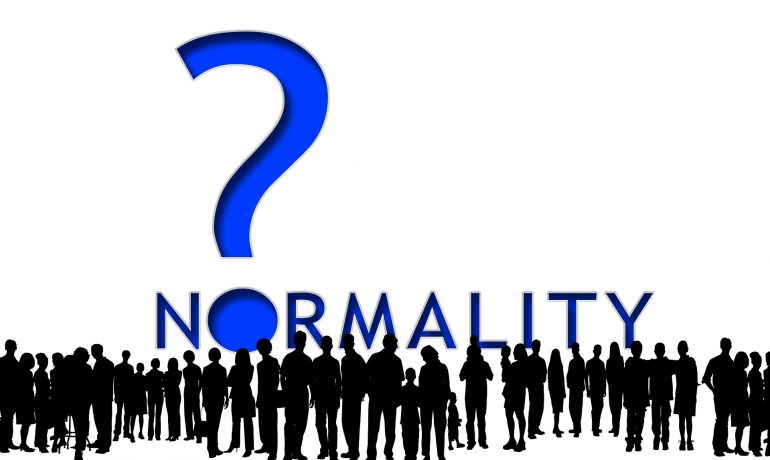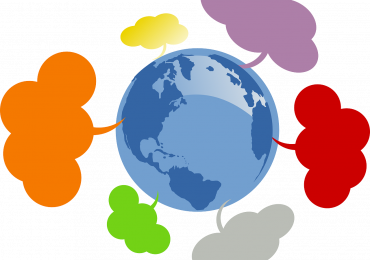What do we call the time after Covid-19? As we’ve already discussed in these blogs, there is a consensus – which we challenge, but let’s go with it – that “this changes everything”. And in an attempt to describe what the world is like after a wrenching moment like a global pandemic, people have reached for one main expression: “the new normal”.
Names matter to futurists. They have power. Vivid, rich names for scenarios help them to live in the minds of their users; explanatory names help people understand the core assumptions of the scenarios; poor names makes the scenarios drop flat on the floor.
Nicholas Epley describes aspects of this in his 2007 Psychological Review article “On seeing human: a three-factor theory of anthropomorphism”. Whilst he is more interested in why humans tend to like and trust things which they consider more “human”, and the mental acrobatics they perform in order to make inanimate objects more humanlike, his three determinants (“the accessibility and applicability of anthropocentric knowledge (elicited agent knowledge), the motivation to explain and understand the behavior of other agents (effectance motivation), and the desire for social contact and affiliation (sociality motivation)”) play to this need for vivid, psychologically attractive approaches to the unfamiliar.
There’s evidence for this as early as you like – after all, it’s not very far into Genesis before Adam gets down to giving names to “all cattle, and to the fowl of the air, and to every beast of the field”. Aldous Huxley’s warning that the trap of language leads us to confuse the words for things with their essences is an echo of Juliet’s “That which we call a rose,/By any other name would smell as sweet”. Philosophers and linguistics get tied up in knots about this sort of thing very easily: Kripke’s “Naming and Necessity” lectures founded the distinction between descriptivist and non-descriptivist/causal theory schools, the arguments of which are still in play today.
So what’s wrong with “the new normal” as shorthand for the world in which we are now living? We start from the position that it is neither “new” nor “normal”. Not new, because humans have faced pandemics before – global ones like Covid-19 or the flu outbreaks of 1918-20 aside, Africa had 500 outbreaks of zoonotic diseases alone in 2019. And not normal, because the concept of normality itself varies massively depending on whether you are a world leader with a nice safe bunker somewhere, or a child living in a favela in Brazil. There is no “normal” to be “new”.
Foresight projects, such as those we run at SAMI Consulting, frequently make use of the Three Horizons model. The first horizon of current paradigms and assumptions gives way to the second, of incremental adjustments and transformational experiments, and then the third of emerging paradigms and ideas (sometimes visible in the “pockets of the future in the present” that we gain from horizon scanning).
![]()
Thinking of our “new normal” problem from the Three Horizons perspective, we can see that the term misses a crucial point: the new normal will only be new and normal until it is replaced. So what would we call its replacement?
What we seem to need is an etymology of normals. McKinsey Consulting use the term “the next normal” – a neat expression which encompasses the possibility of change happening; but it has embedded within it the expectation that that change will itself become usual, a closed off system where we sort of step from the now into the next and then stop.
That’s insufficient for a proper model of the future. Equally, concepts such as post-normal come freighted with cultural theory referents which muddy their use and render them too conflicted to fit our requirement of being vivid and clear. Whilst PNS (post-normal science) has value here, the very depth with which it has already been explored gets in the way of a simple conceptual frame.
We seem to be stuck with “normal”. Everyone is using it, it’s wrong, but we seem to be stuck with it. And frankly the expression “new normal”, unsatisfactory as it is, seems to be shared sufficiently to have developed a common use.
Let us, then call our Horizon 1 “the new normal”. It is, essentially, the world of masks and hand sanitisers, of lockdowns and governments intervening in the economy to keep the pre-pandemic going for as long as possible. “Next normal” is attractive for Horizon 2 – it follows the new, and implies a step change from the present.
So what can we call Horizon 3 – the time of opportunity and change beyond the immediately foreseeable? Something that captures both the impossibility of “normal” in a multi-polar, highly innovative, climate-change prone, increasingly fractured world. What about “never normal”? For this is the future. What we think now to be normal is not what we thought it to be when we were young, and it will not be what we think it is when we are older. Our youths are incomprehensible to our children; our children’s world is often incomprehensible to us. Our future will be like this – “normal” will be insecurity, weirdness and unrelenting change. It will never be normal.
We suggest three phases, then. New normal for now; next normal for the immediate future. And never normal for what comes after that. Maybe that sort of mental framing – in addition to being useful for futurists – will also be useful for us all, as we try to come to terms with a world that will never settle into a “normal” again.
Written by Jonathan Blanchard Smith, SAMI Fellow and Director
The views expressed are those of the author(s) and not necessarily of SAMI Consulting.
SAMI Consulting was founded in 1989 by Shell and St Andrews University. They have undertaken scenario planning projects for a wide range of UK and international organisations. Their core skill is providing the link between futures research and strategy.
If you enjoyed this blog from SAMI Consulting, the home of scenario planning, please sign up for our monthly newsletter at newreader@samiconsulting.co.uk and/or browse our website at https://www.samiconsulting.co.uk
Image by Gerd Altmann from Pixabay


